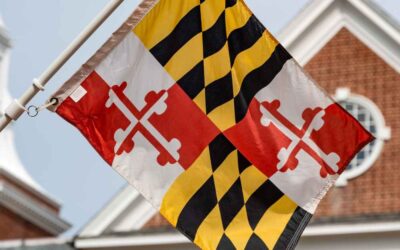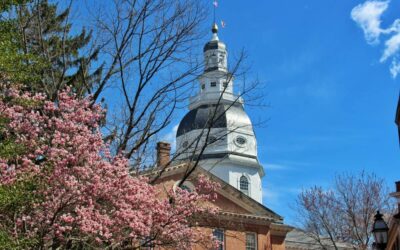Our Insight 2020 blog series will provide you with updates and news regarding the Maryland General Assembly and the 2020 Legislative Session.
The 2020 Maryland General Assembly has been in session for just over a month. The transition to new leadership from the top down has progressed rapidly with committees working feverishly to break down bills, working and reworking them, listening to testimony and considering impacts before determining progress for each.
Kirwan Commission
As expected, the hot topic of the session is the complex and expensive funding of the Kirwan Commission recommendations.
Key areas of the Kirwan Commission recommendations include access to high-quality early childhood education programs, opportunities for public school students to participate in career and technical education programs, allowing students to obtain college credit and degrees while in high school at no cost, advancement of public educators, and maintaining, renovating, or constructing public schools.
House Bill 1 and Senate Bill 1 authorize the Maryland Stadium Authority (MSA) to issue a maximum of $2.2 billion in revenue bonds for public school construction projects. Additional State funds would be made available for supplemental public school construction programs. A new mandated special fund will benefit high priority schools.
Funding of the recommendations requires the Governor’s annual budget to include supplemental funding for public education from the Education Trust Fund.
- $125 million in fiscal 2020
- $250 million in fiscal 2021
- $375 million in fiscal 2022
- 100% of the funds in ETF beginning in fiscal 2023
To be sure, this will dominate discussions and debates up until Sine Die.
5G
Viewers of the Super Bowl experienced the hype in the media over 5G and its capabilities. Simply stated, 5G is a new cellular standard. New wireless standards surface about every ten years – a decade ago 4G launched with faster speed capability and more reliability than its predecessors 3G, which was faster than 2G.
Unfortunately, 5G is more complicated. There are a few versions of 5G but, basically, the technology is about speed and capacity. Essentially, we all communicate along the same highway. As more advances in technology produce more products the highway becomes increasingly more congested. 5G provides “off ramps” which allow short-distance communication to exit quickly providing more room for the long distant communication.
There is no legislative appetite to consider 5G in Maryland this year. A number of states have enacted 5G laws, however, the rollout of the service appears to be sporadic and slow at best. Small towns and cities seem to be initial targets. Major obstacles to legislative approval are local governments raising issues of concern for constituents such as antenna size, utility pole height, locations and costs.
Sports Betting
Maryland is surrounded by states – Pennsylvania, Delaware, New Jersey, West Virginia – that have legalized sports betting since the U.S. Supreme Court lifted a ban that kept states, with the exception of Nevada, from allowing sports betting. For Maryland, sports betting could serve as a possible source of funding for the Kirwan Commission recommendations.
An amendment to the state constitution is needed for Maryland to expand gambling, which requires a public referendum, therefore, a bill will need to be passed to send the issue of sports betting to a referendum in the 2020 general election. Sports betting legislation being considered in both chambers seek to create the regulatory framework around which sports betting would function assuming it passes in the referendum in the General election in November.
Issues being debated:
- Who gets a license – casinos, race tracks, off-track betting parlors, etc
- Cost of the license fee
- The tax on revenues realized from sports betting
- Permitting betting at sporting events on the premises of a stadium
- Permitting mobile betting
Tobacco
Legislation has been introduced in both chambers to increase the tax on all tobacco products, including vaping products. Most of the revenue, however, would come from an increase in the tax on a pack of cigarettes.
Tobacco tax is an approach to improve public health used by states nationally to reduce the number of users, but it is also a source of revenue to be used in funding key priorities. Tobacco tax revenue can be challenging to anticipate when funding priorities because it tends to decline over the years as people quit when the price is too much. A new tax increase on tobacco this year could help fund the Kirwin Commission recommendations.
Energy
Governor Hogan’s CARES legislation – the Clean and Renewable Energy Standard – was heard by the House and Senate last week. The Clean Energy Jobs Act requires that, by 2030, the state get 50% of its electricity from renewable sources, such as wind, solar and trash incineration. It also requires the state to work on a plan to reach 100% renewable electricity by 2040.
In 2016 the Maryland General Assembly passed a law that required energy suppliers to purchase 25% of its energy from renewable sources. In the 2019 legislative session, they expanded that requirement to 50% by the year 2030. The law requires energy suppliers to purchase renewable energy credits from sources defined as renewable energy in Maryland law or the Renewable Portfolio Standard (RPS).
This new legislation seeks to increase the RPS to 100% by 2040 and change it to a Clean Energy Standard, not just renewable, that would use combined heat to energy, nuclear, and hydroelectric power to make up the load needed while removing dirty sources of energy currently on the RPS.
Environmental
Every session there are bills to limit or ban the use of specific fertilizers or pesticides. Opposition to chlorpyrifos, an organophosphate, has been the focus for the past two years and this year is no different – bills to ban its use have again been filed for the 2020 session.
Chlorpyrifos is a broad-spectrum insecticide used to control various insects including grubs, fire ants and lice. It has also been recommended as an effective agent used against the spotted lantern fly. Chlorpyrifos applied to grain, cotton, field, fruit, nut and vegetable crops, lawns and ornamental plants in spray, granular and powder form. Non-agricultural uses include golf courses, turf, green houses, and on non-structural wood treatments such as utility poles and fence posts.
Legislation to prohibit the use of chlorpyrifos has been effectively derailed over the past two sessions. A coalition whose members include agriculture, lawn care and golf course superintendents have been able to maintain enough votes to prevent passage of a ban. That coalition will again mount an effort this session to preserve the right to use an effective insecticide.
These are just a few of the complex issues being considered during this year’s legislative session. The General Assembly has thousands of bills to navigate in the coming months, however, these topics are sure to continue to dominate conversations in committees, on the floor of the House and Senate, and in the after-hours.
Follow our blog in the coming weeks as we provide a deeper dive on key issues and updates from Annapolis. For more information about how our team can help you achieve your government affairs goals, contact us or visit our web site.




